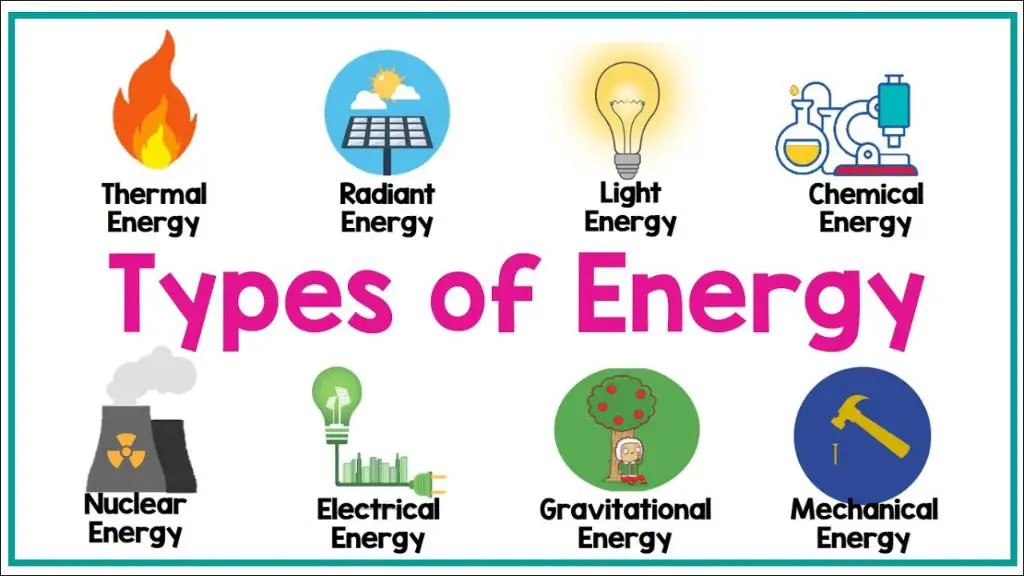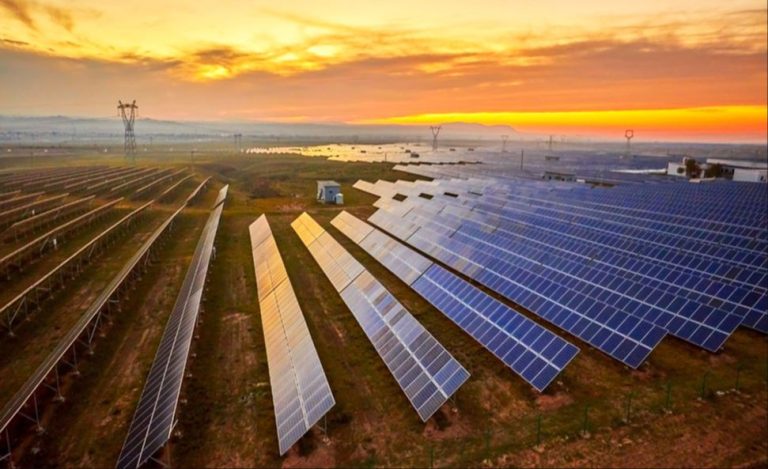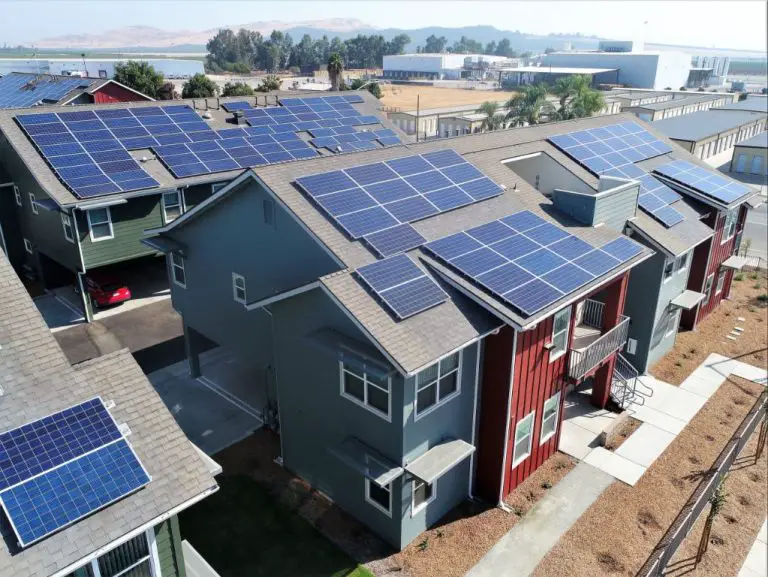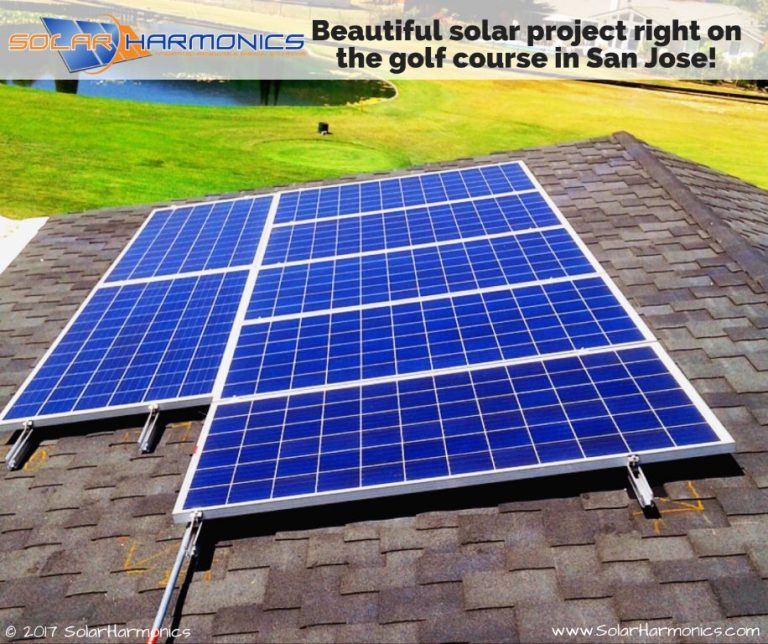How Many Types Of Energy Are There?

There are many forms of energy that exist in the universe. Energy is defined as the ability to do work or produce change. Some main types of energy that exist and will be covered here include: chemical energy, electrical energy, radiant energy, nuclear energy, mechanical energy, thermal energy, sound energy, elastic potential energy, and gravitational potential energy. Energy can be converted from one form to another, but it cannot be created or destroyed according to the law of conservation of energy. Understanding the different types of energy and how they relate to each other is key for utilizing energy efficiently in many scientific and engineering applications.
Chemical Energy
Chemical energy is stored in the bonds between atoms and molecules. It is the energy required to break these bonds or formed when new bonds are made. Chemical energy can be converted to other forms of energy like heat, light, motion, electricity etc. when bonds are broken or formed.
Some examples of chemical energy include:
– Batteries: The chemical reactions that take place in batteries involve breaking and formation of molecular bonds. This allows chemical energy stored in batteries to be converted to electrical energy which can power devices.
– Food: The molecules that make up food store chemical energy in their bonds. This energy is released through metabolism to power biological processes in living organisms.
– Fossil fuels like coal, oil and natural gas also store large amounts of chemical energy in their molecular bonds. Burning these fuels releases this chemical energy as heat and light.
– Explosives and fireworks also rely on the chemical energy stored in their molecules. The explosive reactions violently break molecular bonds, rapidly converting chemical energy into heat, light and motion.
So in summary, chemical energy involves energy stored in the bonds between atoms and molecules. This energy can be tapped by breaking these bonds in chemical reactions to power mechanical, electrical and heat energy needs.
Electrical Energy
Electrical energy is energy related to forces on electrically charged particles and the movement of those particles, often electrons in wires. According to the Encyclopedia Britannica, electrical energy is energy associated with the configuration and motion of electrically charged particles, such as electrons or protons. [1]
Electrons moving through a wire or circuit have kinetic energy that allows them to do work. The kinetic energy of the electrons comes from the potential energy of the power source, like a battery or generator, which provides an electric field to move the electrons. The faster the electrons move, the more electrical energy they carry. [2]
Some common examples of electrical energy include batteries powering flashlights, electricity transmitted through power lines to homes and businesses, electric motors converting electrical energy into mechanical energy, and mobile phones being charged using electrical outlets.
Radiant Energy
Radiant energy refers to electromagnetic waves that travel through space and matter with varying wavelengths and frequencies (Repsol, 2022). It includes visible light, radio waves, gamma rays, and other types of radiation. Radiant energy is the energy carried by these electromagnetic waves as they propagate through space.
Electromagnetic radiation spans a broad spectrum from very long radio waves to very short gamma rays. The different types of electromagnetic radiation are classified according to their wavelength and frequency. Some common examples include (Just Energy, 2022):
- Radio waves – used for radio/TV broadcasting and communications
- Microwaves – used for radar, microwave ovens, and wireless communications
- Infrared rays – felt as heat and used in night vision devices
- Visible light – the light that human eyes can detect
- Ultraviolet rays – higher frequency light that causes sunburn
- X-rays and Gamma rays – very high frequency and energy radiation
Radiant energy is produced anytime charged particles are accelerated or decelerated. Common sources include the sun, lasers, fire, and radioactive decay. Radiant energy travels at the speed of light and can transmit energy across large distances. It does not require a medium like air or water to propagate.
Nuclear Energy
Nuclear energy originates from the splitting (fission) or combining (fusion) of atomic nuclei. This process releases tremendous amounts of energy, as some mass is converted to energy according to Einstein’s equation E=mc2. Nuclear fission involves splitting heavy radioactive elements like uranium or plutonium. This takes place inside nuclear reactors at nuclear power plants, where the heat from fission is used to boil water into steam that spins turbines to generate electricity. Nuclear fusion joins together light elements like hydrogen isotopes to form helium. This reaction powers the sun and other stars, but has not yet been successfully harnessed on Earth. Both fission and fusion release energy from the strong nuclear force that binds protons and neutrons within the nucleus together (Source).
In nuclear fission, a neutron collides with a large radioactive atom like uranium-235 or plutonium-239, splitting it into two lighter nuclei. This also releases 2 or 3 more neutrons that can split other uranium or plutonium nuclei, creating a chain reaction. The fission of uranium or plutonium produces radioactive fission products and generates intense heat. Nuclear power plants harness this heat to produce steam and spin turbines (Source).
In nuclear fusion, nuclei are forced together to make heavier nuclei, like combining hydrogen to form helium. This releases massive amounts of energy due to the strong force binding energy. Fusion occurs naturally in stars, but generating fusion energy on Earth remains a key scientific and engineering challenge. If harnessed, nuclear fusion could provide an abundant, safe, clean energy source (Source).
Mechanical Energy
Mechanical energy is the energy associated with the motion and position of an object or system of objects. There are two forms of mechanical energy: kinetic energy and potential energy.
Kinetic energy is energy of motion. Some everyday examples of kinetic energy include:
– A ball rolling down a hill (https://www.yourdictionary.com/articles/mechanical-energy)
– A bicycle moving down the street
– Ocean waves crashing on the shore
Potential energy is stored energy that comes from an object’s position or shape. Some examples of potential energy include:
– A book sitting on a table (https://www.physicsclassroom.com/class/energy/Lesson-1/Mechanical-Energy)
– A compressed spring
– Water held behind a dam
Mechanical energy plays an important role in many systems, machines, and processes we use every day. Understanding the kinetic and potential energy involved is key to designing and improving mechanical devices.
Thermal Energy
Thermal energy refers to the internal energy present in a system due to the random motion of its atoms and molecules. The higher the temperature of a substance, the greater the kinetic energy of its particles and thus the higher its thermal energy (Wikipedia). When the particles in a substance vibrate, rotate, or move from one location to another, thermal energy is produced from their kinetic energy (Khan Academy).
Common examples of thermal energy include the energy in hot springs, the heating element of an oven, or the motion of particles in a hot drink. Even objects at room temperature contain thermal energy due to the motion of their particles. Adding thermal energy, through heating, increases the speed at which the particles move. Cooling an object removes thermal energy by slowing down the motion of its particles (Solarschools).
Sound Energy
Sound energy is the energy carried by sound waves. When an object vibrates, it causes slight variations in air pressure that radiate outward in the form of longitudinal waves. These waves transmit energy through the air until they reach our ears, causing the eardrum to vibrate and allowing us to hear the sound. The energy transported by sound waves is called sound energy.
There are many examples of sound energy in everyday life. Some common examples include the sounds from musical instruments, people’s voices, and household appliances. Some specific examples include:
- The energy transmitted when a guitar string vibrates and produces musical notes.
- The sound waves that carry a person’s voice when they speak. The vocal cords vibrate, sending out waves that allow speech to be heard.
- The humming sound from a vacuum cleaner that is caused by the motor vibrating within the machine. This vibration sends out low-frequency sound waves into the surrounding air.
- The ringing of a telephone produces sound waves that allow you to hear it. The electrical signals are converted to mechanical vibrations within the phone to create these audible waves.
In each of these examples, an object vibrates rapidly back and forth, sending out vibrations through the surrounding medium. These vibrations transmit energy in the form of sound waves that carry sound information to our ears. The energy transported by the waves is known as sound energy.
Elastic Potential Energy
Elastic potential energy is energy stored as a result of applying a force to deform an elastic object. The energy is stored until the force is removed and the object returns to its original shape. Objects like springs, rubber bands, and stretched strings contain elastic potential energy when they are deformed. The energy is stored in the bonds between the atoms of the material. The molecules are distorted from their equilibrium positions, and the restoring force that tries to bring them back causes the elastic potential energy (source).
The amount of elastic potential energy stored in an object depends on the stiffness of the object (known as the spring constant) and the amount of deformation caused by the applied force. The greater the deformation, the more mechanical energy gets stored. This energy can be quantified using Hooke’s Law, which states that the force needed to extend or compress a spring is proportional to the distance from its equilibrium length. The energy stored in a spring is equal to half the spring constant multiplied by the deformation squared (source).
Examples of elastic potential energy in everyday objects include trampolines, bungee cords, slingshots, bows and arrows. The energy stored in these objects due to deformation can be converted into kinetic energy when released, like a stretched slingshot firing a projectile (source). Understanding elastic potential is useful in physics, engineering, construction, and more.
Gravitational Potential Energy
Gravitational potential energy is the energy stored in an object due to its height above the ground. An object gains gravitational potential energy when it is lifted upwards against the force of gravity. The higher the object is above the ground, the more gravitational potential energy it possesses.
The formula for gravitational potential energy is:
PEG = mgh
Where:
- PEG = gravitational potential energy, measured in Joules (J)
- m = mass of the object, measured in kilograms (kg)
- g = acceleration due to gravity (9.8 m/s2 on Earth’s surface)
- h = height of the object above the ground, measured in meters (m)
Some examples of gravitational potential energy from height include:
- A book sitting on a high shelf has more gravitational potential energy than the same book sitting on a low shelf.
- A rollercoaster at the top of a hill has lots of gravitational potential energy which gets converted to kinetic energy as it rolls down.
- A rock held at the top of a cliff contains gravitational potential energy relative to the ground below. If released, the GPE gets converted to kinetic energy as the rock falls.
- A person at the top of a ladder has more gravitational potential energy than a person standing on the ground. The higher up the ladder, the greater their GPE.
In each example, the object gains gravitational potential energy from being lifted up against the downward pull of gravity. The higher it is, the greater its stored energy. This energy can be released if the object falls.
For more details see: https://study.com/academy/lesson/gravitational-potential-energy-definition-formula-examples.html







